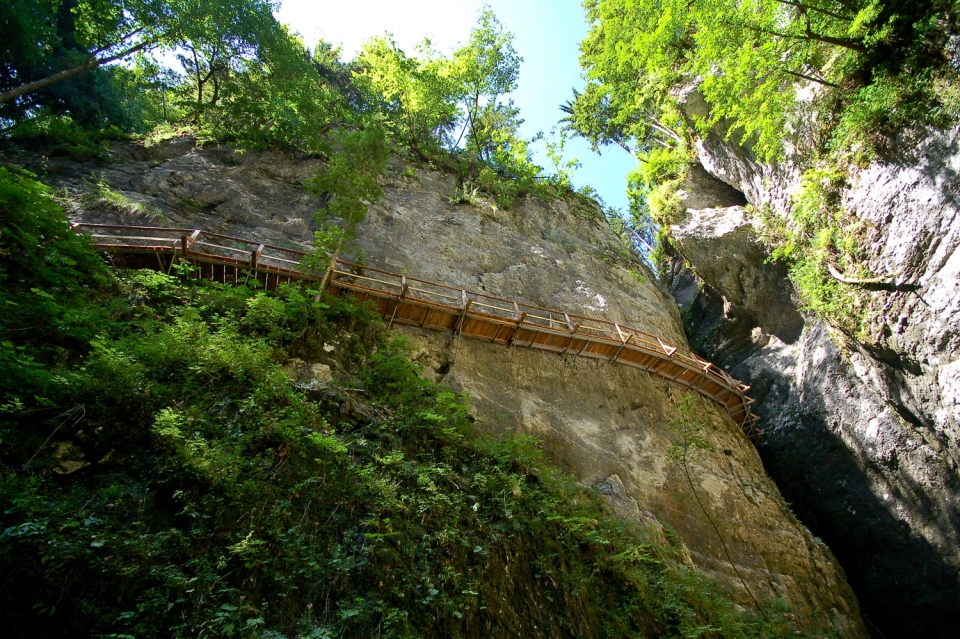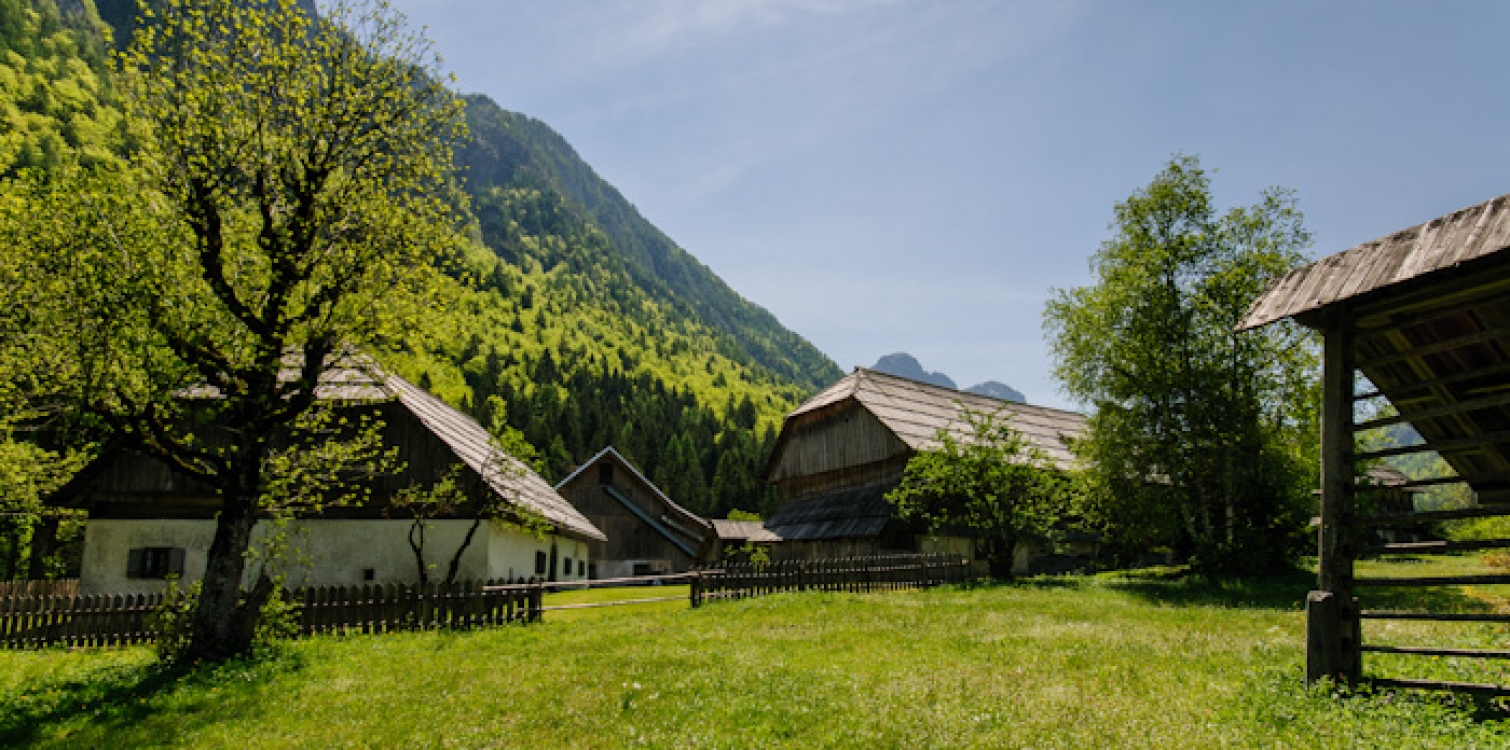The valley begins at the confluence of the Krma and Kot valleys near Zgornja Radovna. The Radovna River springs from several sources, and its short 17 km course ends by flowing into the Sava Dolinka. It is mainly fed by underground flowing water from the Triglav range between Kot and Krma. The river meanders southeast through the valley, then turns north near Krnica and, after passing through the narrow Vintgar Gorge, flows into the Sava Dolinka.
The steep valley slopes are covered by mixed forests. The valley is characterized by its shaded position, which results in a distinctly alpine climate, numerous abundant karst springs, and the shallow, cold Radovna river.
In the lower part of the valley, a cave entrance to the Gorjanska Cave opens in the steep slope above Krnica. The total length of its passages is about 1300 meters, and the cave is 153 meters deep. It was once equipped for visitors, but today it is accessible only with the accompaniment of spelunkers.
Opposite the cave, the nearly two-kilometer-long Pokljuka Gorge cuts into the limestone slope. It was carved by the flow of the Ribščica River during the melting of glaciers. Once the water dried up, the largest fossil gorge in Slovenia emerged. Krnica is also the place where the Radovna River sharply bends and turns northeast. The river is confined by the 1600-meter-long Vintgar Gorge. This famous gorge, with its steep and sheer cliffs, ends with the majestic 13-meter-high Šum Waterfall – one of the rare river waterfalls in Slovenia.
People who have lived and still live in this area have had to constantly adapt to the harsh alpine climate and scarce natural resources. The homesteads are scattered across the wider part of the Zgornja Radovna Valley. Initially, farmers only had pastures here, and it was only later that they settled permanently in Spodnja, Srednja, and Zgornja Radovna. The most well-known homesteads were Pr' Gogal, Pr' Guhar, Pr' Biščk, Pr' Požrvu, Pr' Psnak, and Pr' Pocar.

DO YOU KNOW?
- Oral tradition tells that a French army was moving through the Radovna valley at the beginning of the 19th century. One of the soldiers of the French Emperor Napoleon Bonaparte is said to have inscribed his initials on a special rock. It is said to be the so-called Napoleon Stone.
- The Pocar homestead is now arranged as a museum with a permanent collection and many guest exhibitions. During the summer, the homestead is open to visitors and hosts numerous events and workshops.

